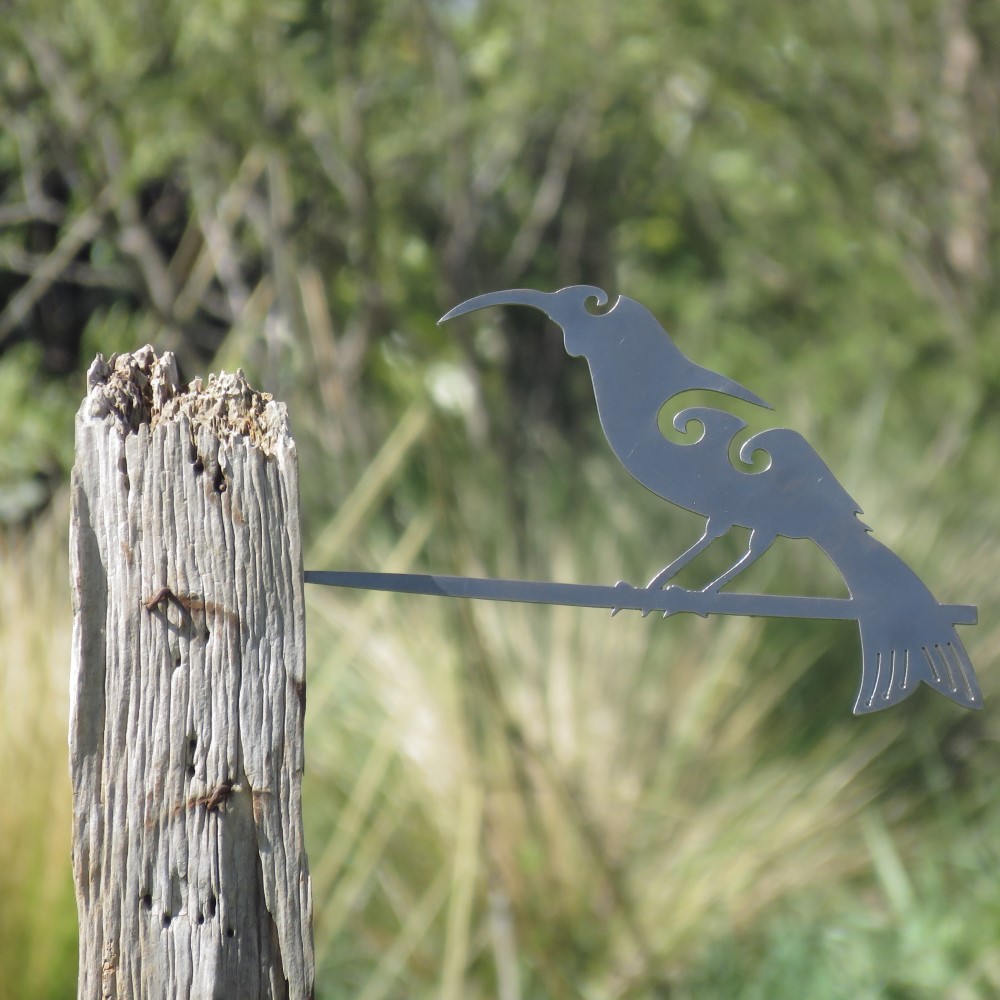The huia was the largest of New Zealand’s wattlebird species. Sadly, the introduction of mammalian predators, and to a lesser extent human hunting, lead to the demise and ultimate extinction of huia around the 1920s.
They showed the most dramatic sexual dimorphism of any bird species, with large difference in the size and shape of the bills of male and female birds. Huia lived in forested areas, where they used their bills to feed on wood-dwelling insects and their larvae. It is thought that they were distributed widely throughout the North Island, but that they were absent from the South Island.
The unique tail feathers of the huia were a prized possession by Maori, and worn as a sign of status and the birds themselves were also popular as museum pieces and collectors’ items.
Even though the huia is sadly now gone from our native bush, you can always have a huia in your garden with a Blazen.Metal huia bang’n bird – choose from traditional, koru or insect inlay. 25% off for the month of September.
Bibliography
Szabo, M.J. 2013. Huia. In Miskelly, C.M. (ed.) New Zealand Birds Online. www.nzbirdsonline.org.nz



